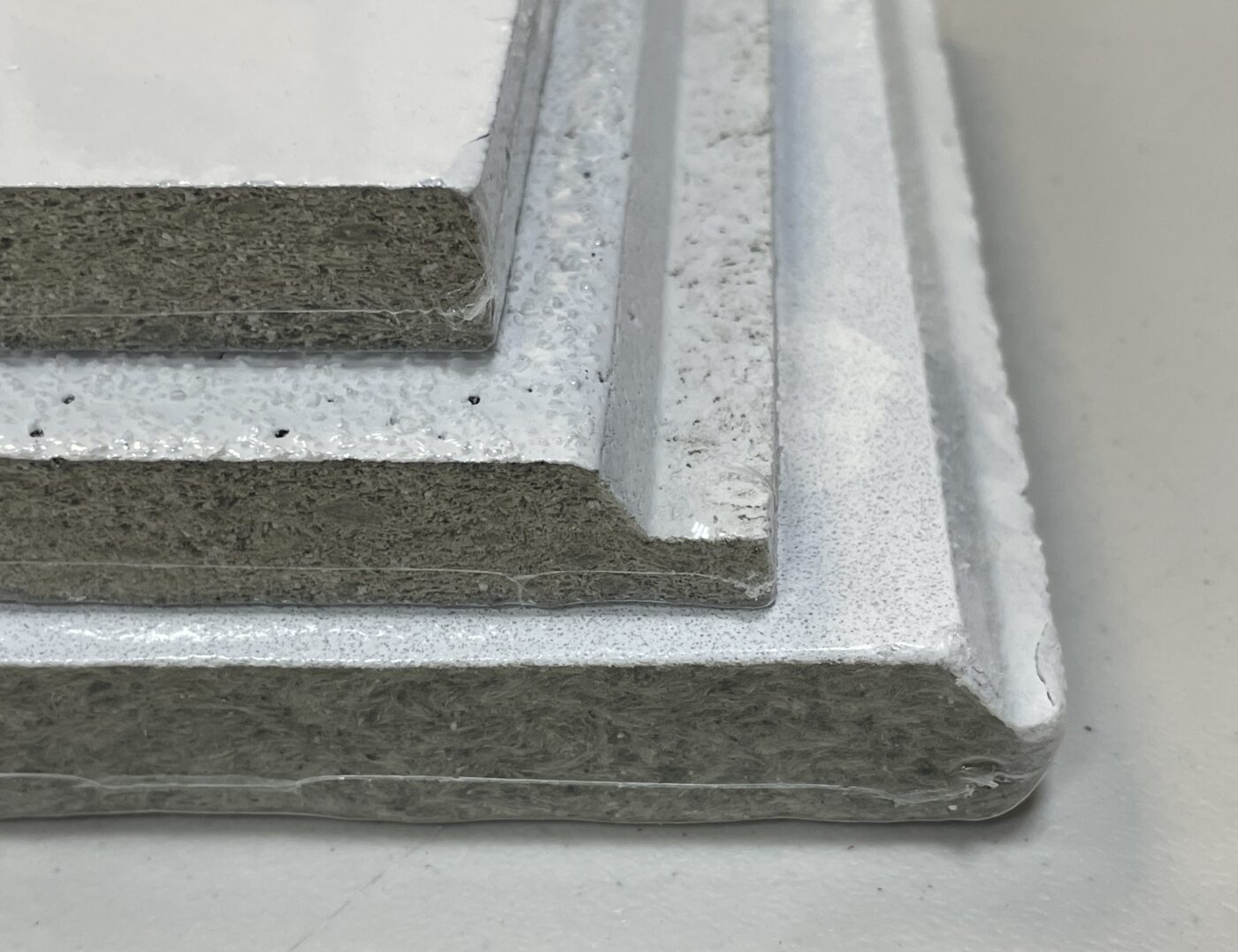Left Sidebar
Mineral fiber ceiling tiles can have different textures and appearances, which are typically achieved during the manufacturing process. Manufacturers use various techniques and additives to create these different textures. Here are some common methods used to achieve different textures in mineral fiber ceilings:
- Surface Embossing: Surface embossing involves pressing a pattern or texture onto the surface of the mineral fiber tiles during the manufacturing process. This can create raised patterns, designs, or textures on the face of the tiles, resulting in a decorative finish (Fissured).
- Perforations: Perforations or holes can be added to mineral fiber tiles to improve their acoustic properties. These perforations can be arranged in specific patterns to create a textured appearance on the surface.
- Custom Molds: Manufacturers can create custom molds for mineral fiber tiles to achieve specific textures and patterns. These molds can be used to emboss or shape the tiles to achieve unique designs.
- Coatings and Paints: The use of coatings and paints can also contribute to the texture and appearance of mineral fiber ceilings. These coatings can be applied to the surface of the tiles to create various visual effects and add texture.
- Aggregate Inclusions: Some mineral fiber tiles incorporate aggregates or granular materials into the composition. These aggregates can create a textured or speckled appearance on the surface of the tiles.
The choice of texture depends on the aesthetic preferences and functional requirements of the space. Different textures can affect the acoustics, light reflection, and overall visual appeal of the ceiling. Designers and architects often select mineral fiber ceiling tiles with textures that complement the overall design and purpose of the room.
At BENNERUSA we have a wide range of mineral fiber ceilings, which are characterized by their high levels of acoustic absorption, durability and aesthetics, as well as being very economical and easy to install. This line of ceilings is available in diverse colors, styles, textures, surfaces or reliefs with directional or non-directional patterns.











